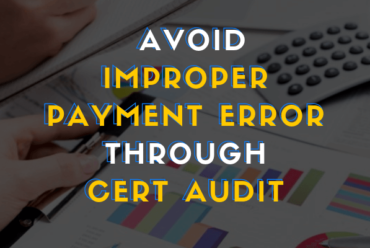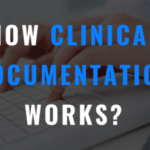Common Documentation Errors Identified by CERT & RACS. The Centers for Medicare & Medicaid Services calculates the Medicare Fee-for-Service (FFS) improper payment rate through the CERT program. Each year, CERT evaluates a statistically valid stratified random sample of claims to determine if they were paid properly under Medicare coverage, coding, and billing rules.
Are you on top of the CMS documentation guidelines?
The following points identify CMS guidelines for correct documentation that supports and validates the claim submitted for services/procedures:
- The record of the encounter/episode of care should be complete and legible
- Documentation should include:
- Reason for the encounter
- Assessment, diagnosis, and clinical impression
- Medical plan of care
- Date and legible identity of the observer
- The rationale is documented for ordering diagnostic and ancillary services
- Past and present diagnoses are documented
- Diagnosis and treatments are supported in the medical record and match the codes reported on the CMS-1500 for the patient’s services
Lack of a valid reason for an encounter is one of the most frequent pitfalls that leads to a denied claim, which could be because a patient may not present with a chief complaint (CC), or it’s difficult to determine the reason for the encounter, or when the CC does not correlate to the components of the assessment.
The data indicates all health care organizations should have regular documentation, coding and billing audits performed as part of their annual compliance plan. Communication and educational tools for providers and coding staff can be implemented to related documentation and coding-related issues from routine audits.
| 2018 CMS CERT Error – Improper Payments | 2018 CMS CERT Error Percentage | 2018 National Revenue Loss In Improper Payments |
| Insufficient Documentation | 58% | $17,759 Million |
| No Documentation | 2.6% | $807 Million |
| Lack of Medical Necessity | 21.16% | $6,740 Million |
| Incorrect Coding | 11.19% | $2,758 Million |
The Medicare Fee for Service (FFS) Recovery Audit Program’s (RACs) mission is to identify and correct Medicare improper payments through the efficient detection and collection of overpayments made on claims of healthcare services provided to Medicare beneficiaries, and the identification of underpayments to providers so that the CMS can implement actions that will prevent future improper payments in all 50 states.
CERT and RACs shortlisted the top errors in CDI:
- Incomplete progress notes: They are either unsigned, updated or have insufficient details.
- Unauthenticated medical record: The medical record bears no provider signature, initials, supervising signature, or a legible signature.
- No documentation to support the service or procedure: Incomplete or missing signed order or progress note describing intent for service/procedure/test.
CERT Identifies Common E/M Services
Here are the top three services CERT targets:
- E&M services for established office visits
- Initial hospital visits
- Subsequent hospital visits
High error rates were reported by CERT for:
- Insufficient documentation
- Lack of support for the medical necessity
- Inaccurate E/M codes
CERT also targets:
- Incomplete documentation
Including misspelled words or incomplete sentences that lack meaning led the auditor to believe the information was copied or the provider didn’t read it.
- Holes in the record
These appear often in records, at times with drug names missing. It is especially notable when the physician has signed off on the record, proving that he didn’t bother to read it thoroughly.
- Noncompliance with organizational policies
Practices should have a compliance plan in place that focuses on the CPT® codes your providers use most often for ensuring accurate and thorough documentation. The practice should train providers on compliance plan processes, require that they verify that they received and understand the training, and ensure that they follow the plan by defining disciplinary actions if they fail to do so.
Services must be reasonable and necessary
The provider must be clearly able to documents that the patient’s diagnosis justifies the treatment rendered to avoid the slightest indication that the treatment is for the convenience or comfort of the patient, provider, or supplier.
Drawbacks of auto-populate in an EMR
Providers should double check when the EMR auto-populates documentation. Ensure that the records do not demonstrate auto-population of the word ‘routine,’ as this might lead to diluting the provider’s case for the unique medical necessity of care for the specific medical condition.
Providers also shouldn’t quickly check off boxes in the EMR or in the record without carefully reviewing the accuracy of the documentation. Checkboxes lend themselves to quick completion of documentation that may be inaccurate.
Note:
Physicians who get paid for an over-documented service do not necessarily get to keep the money. Auditors on the payers’ side look for evidence-based documentation to prove medical necessity, and if they don’t find it, the payers ask for their money back. Physicians must be able to substantiate their claims of medical necessity with accurate documentation.
Learn More on timely documentation that reflects the scope of services provided. Contact us or Schedule Strategy Meeting to know more to overcome from Documentations Errors.



